At the Sivananda Yoga Farm, a winter full of precipitation ushers in bright green hillsides dotted with multicolored wildflowers. However, Spring also brings lots of new weeds in our garden and greenhouse. Not all weeds are bad though, in fact most of them have a use. While invasive annual grasses are an unwelcome guest our garden, there are many weeds that we leave in place for their benefits.
According to permaculture, every time you pull a weed, you create a disturbed soil condition ideal for more weeds to germinate. Some weeds beneficial, as they provide medicine, attract insects, protect the soil, and even increase fertility.
We try to employ the philosophy of leaving as many plants in the ground as is practical. The weeds listed below definitely make our “leave it in the ground” list.
1. Chickweed
Chickweed is an edible green herb that also makes a great groundcover, meaning it will creep along the ground and cover an entire spot. It has small white flowers that attract pollinators, and it also a healthy salad green or soup addition!
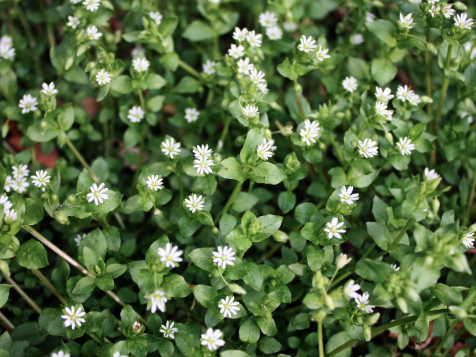
It has medicinal properties as well, be but beware not to confuse chickweed with its poisonous lookalike, scarlet pimpernel. Caution: it can be hard to tell the two apart without their flowers. Only eat wild plants you when have a positive identification from an expert!
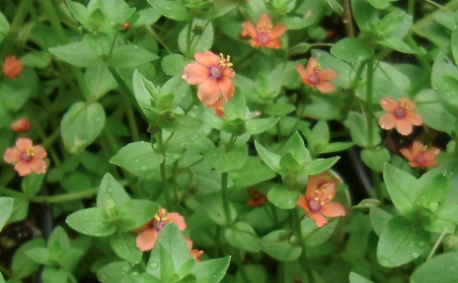
2. Yellow Dock
Yellow dock is a common weed that grows in old orchards, around trees, and often near waterways. It is an edible green high in minerals that is best eaten cooked. The plant can also be used medicinally as a laxative, anti-inflammatory, anti-bacterial and diuretic.
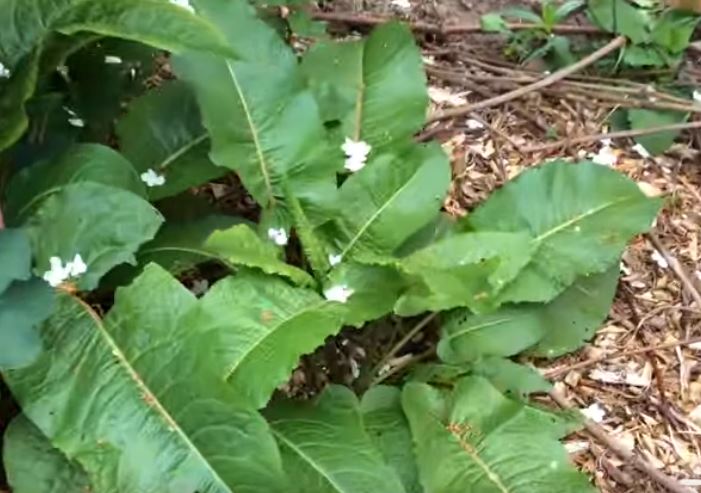
Dock is also a mineral accumulator and may help fertilize the soil around it with iron, calcium, magnesium and phosphorus if you chop and drop the leaves. Plant it around your fruit trees for helpful companion plant with many uses.
3. Bittercress
This spectacular weed is in the brassica family, the same class of plants as broccoli, cabbage and kale. Likewise, it is full of good-for-you nutrients such as Vitamin C, glucosinolates (which remove carciongens from the body), and beta-carotene.
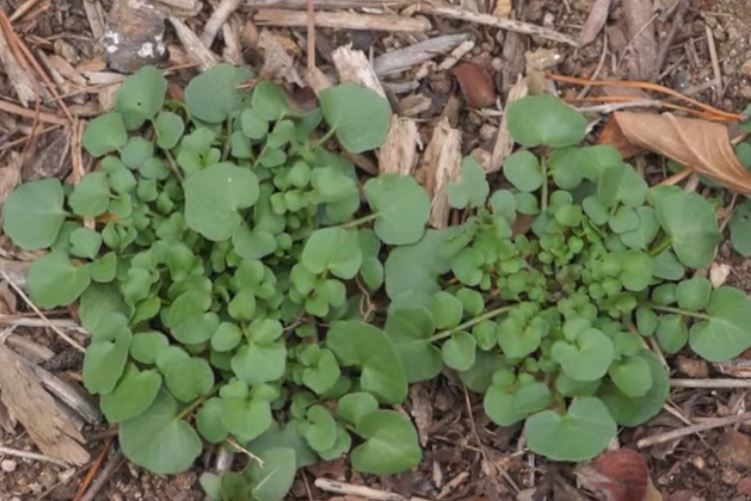
The sweet and bitter green will grow in USDA hardiness zones 4-8, and will commonly volunteer itself in gardens, pathways and untended lawns. It can be eaten raw or cooked, and used as a garnish or as an excellent addition to salads.
4. Mullein
Mullein is an essential herb for any herbal first aid kit. It is easy to identify with its fuzzy leaves. It is a biennial plant, meaning it has two-year life cycle. In its second year, it grows a 2-8 foot tall stalk with yellow flowers.

Mullein is an effective medicine for most lung related conditions including asthma, allergies, cough, bronchitis, tuberculosis, pneumonia, and more. It is also used to treat flu symptoms, cold, migraines, joint pain, gout, colic, diarrhea and a myriad of other symptoms.
We find the herb especially useful in California during the fire season, because it helps to cleanse the lungs. The dried and fresh leaf can both be used, and will store for a long time if dried. Mullein is a very common herb and can grow in poor, dry and compacted soil conditions.
While the leaves are the most commonly used part, the flower can be made into a tincture to treat swelling and ear infections. The root is used to treat nerve and muscle pain.
5. Dandelion
Last but certainly not least, we have dandelion, the word-famous lawn weed. Most manicured lawn-lovers hate this common weed, yet it is loved by herbalists, permaculturists and naturalists alike.

This powerful bitter herb has so many uses. The entire part of the plant is both edible and medicinal. The young tender greens in early spring make a great salad addition. Dandelion’s yellow flowers are also edible and have a sweet taste. More mature greens are intensely bitter and taste better when cooked.
The root can be roasted and made into a tea that is used a coffee substitute. Its bitter quality gives it liver cleansing and detoxifying properties, which is especially important in the spring time when the body is waking up and getting rid of winter weight. Research shows that dandelion can also be used to reduce inflammation and even treat cancer and diabetes.
Dandelion thrives in poor, compacted soils because of its strong taproot. It is one of the first weeds to show up in order to remediate tilled, damaged or compacted soil. The plant also provides joy for adults and children alike, because people enjoy blowing its mature seeds into the wind.
Weeds Are Your Friends
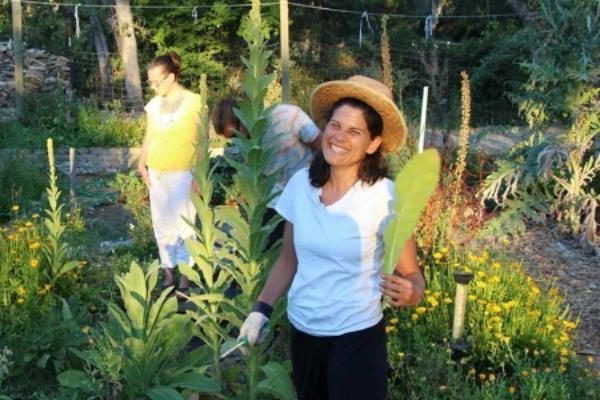
I always tell people, there’s no such thing as a bad plant. There are only plants that humans don’t want in certain places. Sometimes we feel the need to remove weeds to beautify spaces, increase crop production or take out overly invasive weeds. However, when done in excess, constant weeding can create imbalance on the land and then we miss out on the viable medicine and food they provide.
Weeds are mother nature’s warriors and healers. They come into action when land has been disturbed, in order to improve soil conditions and protect it from erosion. In the same way that certain weeds heal the Earth, many weeds are also medicinal herbs and can be used to heal people as well. Next time before thinking about pulling a plant out of the earth or spraying it with a pesticide, try to identify it first. Maybe it is there for a good reason.

Colin Eldridge (Krishna Das)
Krishna Das teaches and helps coordinate Yoga, permaculture and outdoors programs at the Sivananda Yoga Farm.



